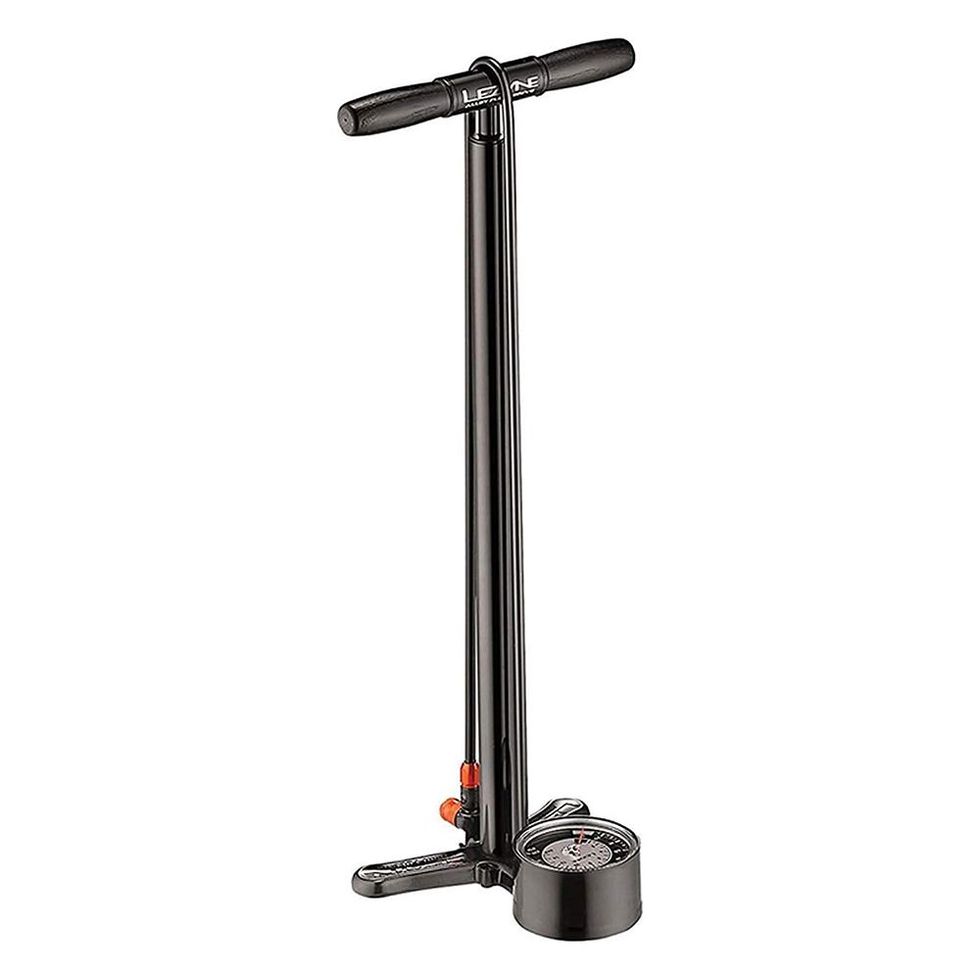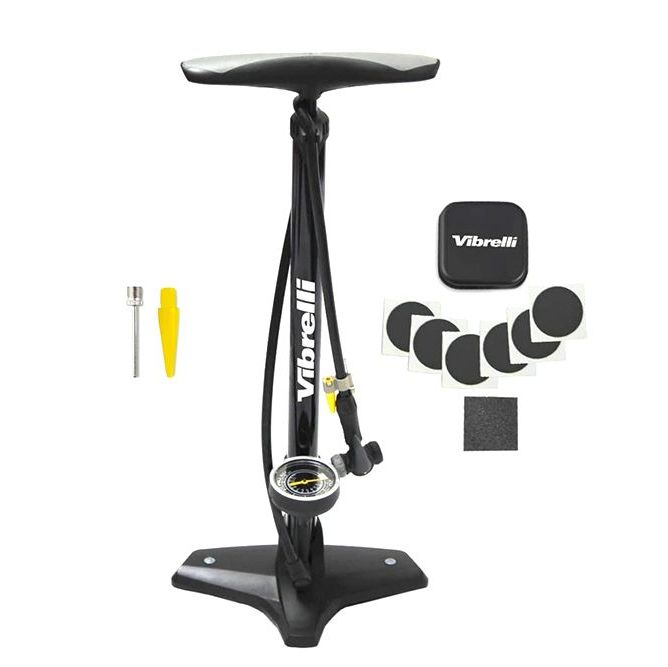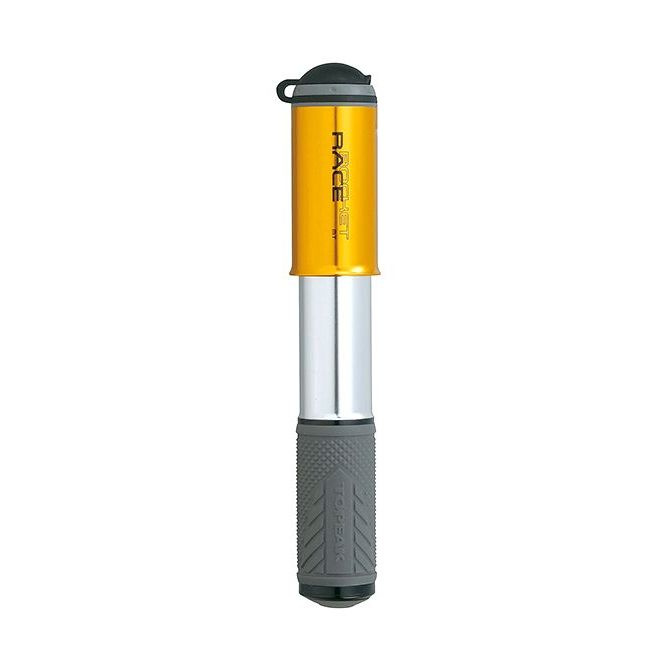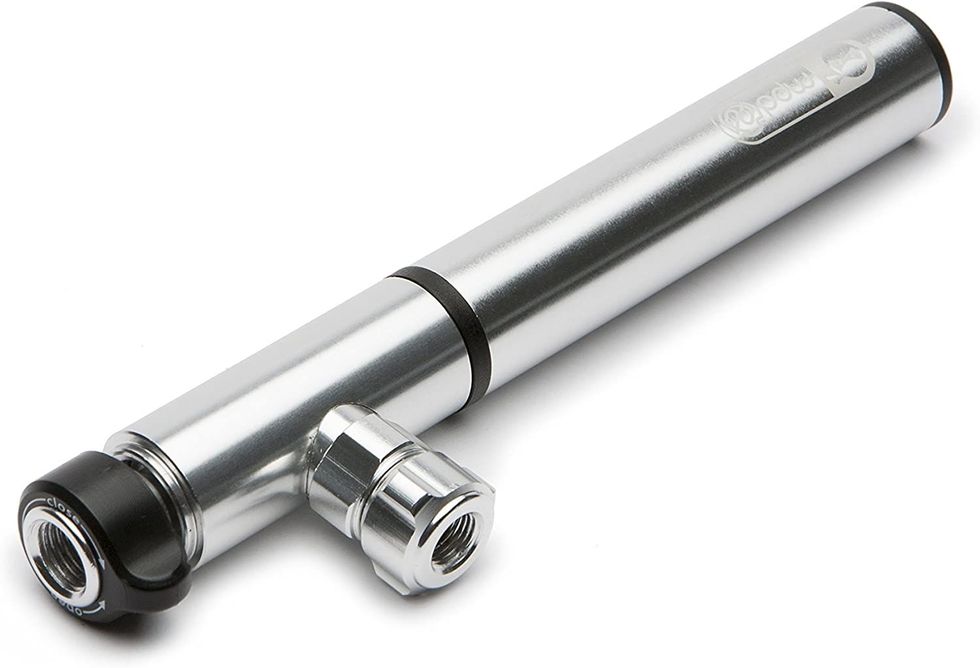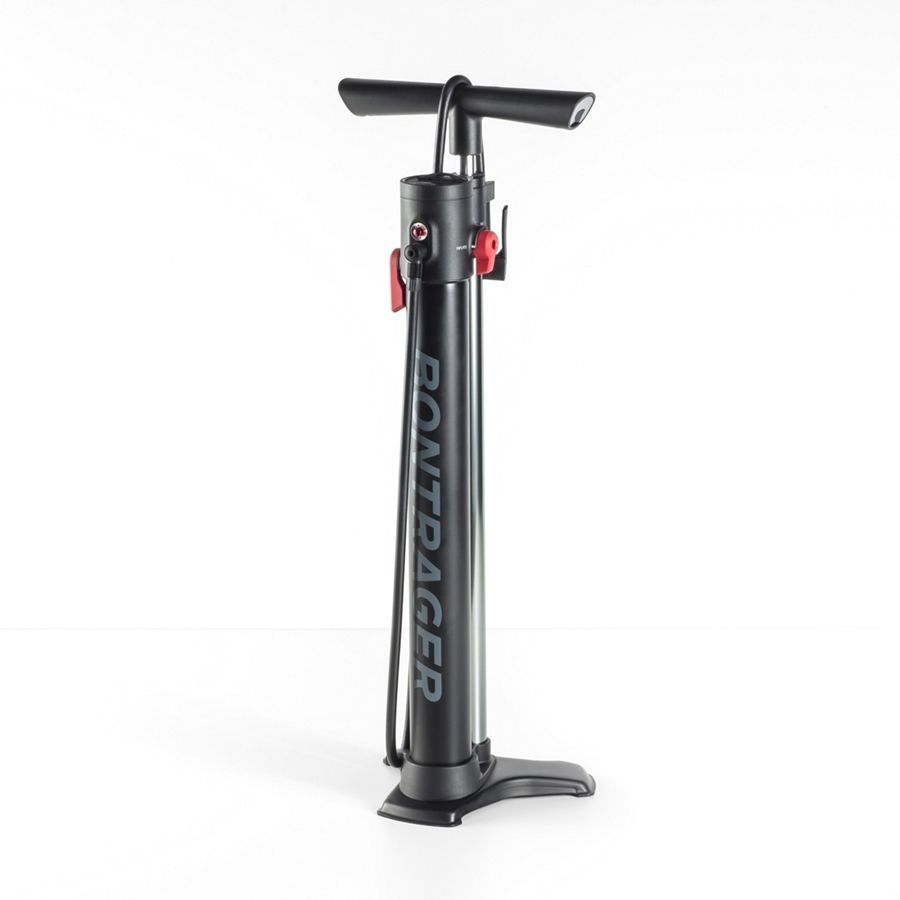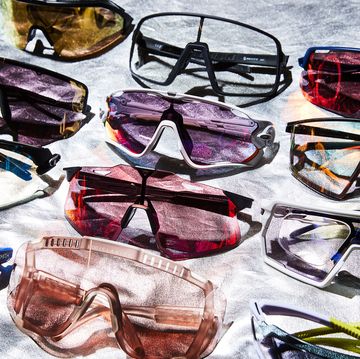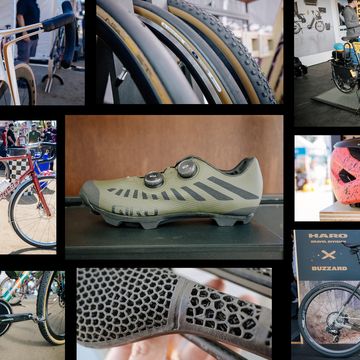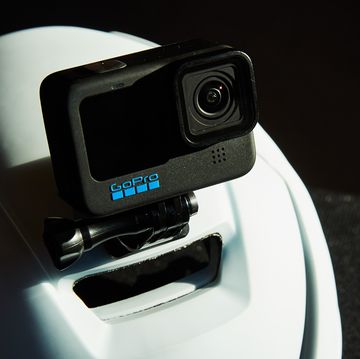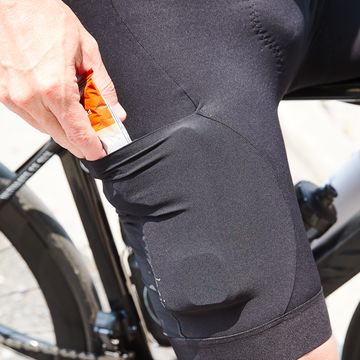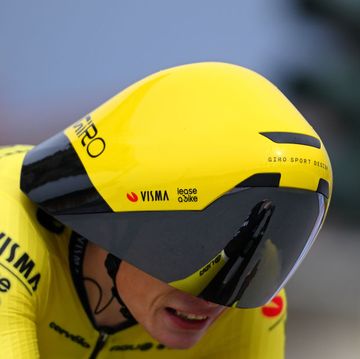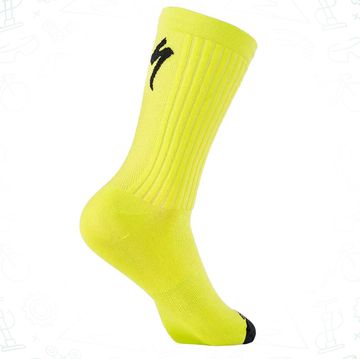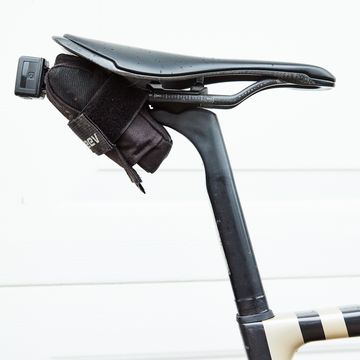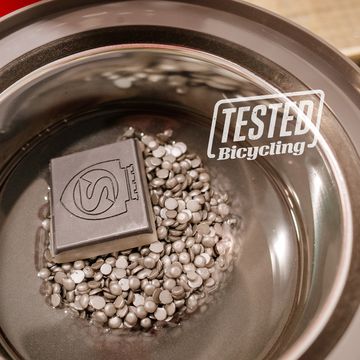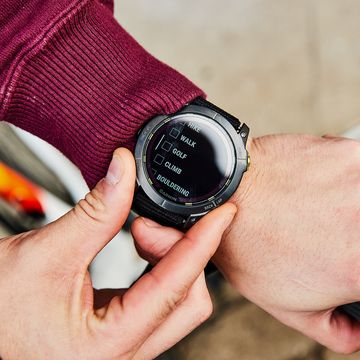Bike pumps are the unsung hero of cycling. You wouldn’t get very far without one, whether it’s a mini pump that goes along for the ride or a hard-working floor pump in the garage. Either way, both serve the same purpose: to inflate your tires. A floor pump typically does its job faster and with better accuracy, while a mini pump can get you out of a jam and back in action until you’re home again, where you can top off your tire pressure with a floor pump. Ideally, you should have one of each and be comfortable using both.
The Best Bike Pumps
- Dual-Range Gauge for All Tires: Specialized Air Tool Comp V2
- Built to Last: Lezyne Alloy Floor Drive
- Best Gauge for Mountain Bike Tires: Specialized Air Tool MTB
- Best Cheap Pump: Vibrelli Bike Floor Pump
- Best High-Volume: Topeak Mountain DA Mini
Floor vs. Mini: Why You Need Both
Which Valve Is Which?
Join Bicycling All Access for more gear advice and tips
Versatile Pump Heads
Most modern pumps are designed to work with both main valve types, and some come with adapters for things like sports balls and pool floats.
High Pressure or High Volume?
Bicycle tire pressures are measured in PSI (pounds per square inch), which is the Imperial measurement for air pressure used in North America. BAR is the metric measurement for the pressure in a specific volume.
High-pressure pumps move a smaller volume of air with each stroke and are better suited to filling skinny road tires. Generally speaking, if you ride tire pressures higher than 60 psi, you need a high-pressure pump. These will max out between 160 and 220 psi.
High-volume pumps, on the other hand, move a large amount of air with each stroke and are made for filling fat tires very quickly. However, most struggle to inflate tires to more than 60 psi. The gauges on these pumps typically have large, easy-to-read markings in one-psi increments that make it easy to dial in a precise tire pressure.
Tire pressure is one of the (personal) metrics that can have loads of impact on how you ride. The perfect tire pressure is a range rather than a hard number. Heres a link to help navigate finding your perfect tire pressure.
Lastly, because no two rims are designed the same, it’s extremely important you read the instructions and manual to verify what is the maximum pressure your rim is designed for. Hooked rims and tires are meant to hold tires onto the rim at higher pressures due to the recessed chanel, while hookless function at lower pressures and operate because of the tire pressure and tighter tolerances built into the rim and tire. With tubeless specific systems it is highly encouraged not to go above the recommended safe pressures. (ie. 72.5 psi for most tubeless rims)
How We Tested
We’ve spent hours inflating and deflating tires, pushing our forearm strength to the limit to see how these pumps perform. We pumped skinny tires, fat tires, gravel tires, and everything in between. For the floor pumps, we counted how many strokes it took to get to 20 psi in a mid-width, 29-inch mountain bike tire, as well as 80 pounds in a 700 x 28mm tire. For mini pumps, we tested tire pressure after 200 strokes, the limit of our collective forearm strength.
And one of the most common questions we get when assessing pumps is how accurate the gauges are. So we built a device that allows us to not only test the accuracy of each gauge but also reliably compare each pump. (Full disclosure: Our device reads only as high as 100 psi.) We evaluated the pumps on performance, price, stability, user-friendliness, and how easy it is to read the gauge to land on these, which will best serve the needs of anyone looking for a new pump.
FLOOR PUMPS
Specialized already makes a very good floor pump. But now it offers one of the smartest too. The Air Tool Comp V2 has a dual-range pressure gauge: Half of the gauge is for low pressures and runs from zero to 30 psi in one-psi gradients, while the other half is for high-pressure tires and runs from 30 to 120 psi in two-psi gradients. That means it’s easy to read for almost any tire without the hassle of a digital gauge and batteries. It also means a cleaner workshop: One pump can replace a mountain bike pump with a low-pressure gauge and a road bike pump with high-pressure gauge. However, the gauge leaves something to be desired when it comes to accuracy. Our testing found that it reads two psi low for pressures up to 30 psi, then reads between four and five psi low from 35 up to 100. However, the variations are consistent and repeatable, meaning the Air Tool Comp will inflate your tire the same way every time. Although we also wish the pump head had a bleed valve, we still use it regularly and appreciate its versatility across a wide range of tire sizes and widths.
Everything about this pump is carefully considered. Its extra-long, nylon-reinforced hose wraps over the handle and secures to the base, which serves two purposes: It keeps the plunger from extending when not in use and prevents the hose from flopping around. The oversize gauge—the housing for which is integrated with the base—is easy to read and replace, should it someday become inaccurate or stop working altogether. The ABS 1 Pro Flip-Thread Chuck—one side for presta, the other for Schrader—secures tightly to valve stems and has a bleed button to help you set the ideal pressure. It also has a valve-core wrench, which is handy for tubeless systems. And the whole CNC-machined, aluminum package is just plain beautiful to look at. Not only has this pump stood the test of time–it’s held up to well over two years of use—the gauge performed flawlessly in our testing.
This high-volume pump is, as the name suggests, made specifically for filling mountain bike tires. The three-inch gauge goes up to only 40 psi, with big, easy-to-read markings in one-pound increments. Of all the pumps on this list, this one has the gauge that’s the easiest to use for setting a precise tire pressure. The stable metal base is the same as the Air Tool and Air Tool Comp V2. Like those pumps, the Air Tool MTB also has a metal barrel, although it’s much larger in diameter to move a higher volume of air with each stroke. And move a lot of air it does—it took us only 20 strokes to fill a 29 x 2.6-inch tire to 20 psi. The plastic handle and loose-fitting plunger give the feel of a discount product. But testing confirmed that this pump’s gauge is accurate at all points, and we consistently reach for the Air Tool when filling mountain bike tires. We wished for only one thing: a release valve to let out the pressure. Though it may seem minor, it’s incredibly useful when you’re trying to hit 17 psi and you accidentally overfill.
At 2 feet tall, the Vibrelli is a few inches shorter than the average floor pump, making it a more convenient travel companion. We found it easy to jigsaw into a trunk already overcrowded with bikes and gear. And since it’s so light (2.75 pounds), it won’t push your checked baggage over the airline’s weight limit. Our testing found that the gauge was accurate up to 100 psi (the max pressure our testing device will measure), although the graduations on the dial go all the way up to 160 psi. This pump is best for road and thin gravel tires. Although you can fill fat tires with the Vibrelli, it’s not a high-volume pump, so you’ll get a tricep workout filling mountain bike tires. Although the shaft is steel, the base and handle are plastic. That’s not a deal breaker, but it means the pump isn’t as robust as the more expensive ones on this list. But at this price, it’s a great value.
MINI PUMPS
This pump won our testing. It’s noticeably larger than the rest of the minis on this list, but it really works. Despite being best-suited for high-volume tires, it also does a solid job getting road tires back to serviceable riding pressure. And since it’s a dual-stroke type, it inflates tires extremely fast. Also, it has a built-in gauge so we were never left wondering just how much (or how little) air we had managed to cram back into our tire. For both flat repair and “Oh damn, I left my floor pump at home” moments, the Mountain DA G is a lifesaver.
Not content to just turn out beautiful, exquisitely detailed, and gloriously over-the-top floor pumps, Silca has decided to make one of the best mini road pumps we've tried. The locking, lossless air chuck (Presta or Schrader) is connected to a flexible hose that stores inside the pump when not in use. The pump will confidently get a road tire up to 100psi even if it's not super fast. The built in heat sink does make reaching the higher pressures more comfortable though as it prevents the barrel of the pump from becoming too hot.
This pump is a great tool for riders who typically rely on CO2 cartridges but also like to have manual insurance. It’s small enough (7.3 inches) that it didn’t dominate our bike when using the bottle-cage clip, and it can also fit securely in a jersey pocket. It’s even powerful enough to get fat tires back up to pressure after a blowout, even if it does take more pumping that a larger dual-action pump like the Topeak Mountain DA G Mini. But at 125 grams, it’s much lighter. Its best feature is a long rubber hose that lives inside the pump when not in use and works with both Schrader and Presta valves. That flexible hose makes the Race Rocket MT much easier to pump vigorously without fear of damaging the valve stem than pumps without a rubber hose. The only drawback is that it’s not a dual-action pump, meaning it pushes air into the tire only when depressing the plunger. But it’s light and reliable, so whether we were micro-adjusting tire pressure mid-ride or relying on it as a backup plan for when our CO2 was spent, this pump never let us down.
CO2 PUMPS
This tiny but wonderful pump is a two in one! It has the benefits of getting your CO2 and a handpump in one. It’ll get you up to 100 psi so it’ll cover your MTB and Road needs. With its small yet powerful form factor it weighs a meager 3 oz and will take both schrader and presta valve.
Keeping this in your saddle bag won't cost you nearly as much as not having it when times are tight. The control drive's small form factor allows you to dispense the right amount of CO2 without having to waste the full amount thanks to its open and closed dials.
TUBELESS PUMPS
The TLR Flash Charger is a good alternative to an air compressor when it comes to installing tubeless tires. The large vertical tank can be pressurized to 160 psi, the maximum pressure read by the digital gauge. To install tubeless tires, place the nozzle on the valve, and when the tank is pressurized, flip the release lever from Charge to Inflate. Opening and closing that lever isn’t a binary choice—you can modulate the pressure as it’s released. When installing a mountain bike tire, we were nervous to blast in 160 pounds at one shot, but found it very handy to let air in, in small bursts, giving the tire time to settle. The TLR Flash Charger also works well as a traditional high-pressure pump. The digital gauge is, according to our testing, accurate up to 100 psi, which is the maximum pressure our testing device measures, and that gauge measures pressure in one-tenth increments. The pump is a little big and unwieldy to throw into the back of a car, but it’s a great tool for the home workshop.
Getting Tubeless down just became a whole lot easier thanks to Topeaks two stage floor pump. With its “Charge” and “Inflate” modes, getting the bead to sit on the rim becomes a worry of the past! It’s ability to “hold” up to 120 psi or 1 liter of air allows this pump to pack the punch your tires need. The additional long hose, wide handles and easy to read instrument cluster provide a pleasant easy tire experience.
If you’ve been around the block on your bike lately, you’ll hear Lezyne spoken like a whisper. Their products are thoughtful, robust and filled with value. This pump is also a two stage procedure thanks to a small rotating action near the pump head. One of my favorite features on this pump is the wooden handle it just feels right.
FRAME PUMPS
The quintessential evolution of years of miles on the road. This sturdy, reliable and powerful pump is the ticket to getting you home. Silca’s pump comes in a variety of sizes and delivers the air you need regardless of tire size. The wonderful part about this pump is you can depend on Silca’s reliability and service-ability. While having a mini pump for certain situations is nice, grabbing an Impero pump is an investable item you can even hand down.
If money was not a concern and you don't mind splurging on luxury bike accessories, No.22 Bicycles Titanium Bodied Silca is exactly like the one Silca sells minus its stunning Titanium Body. Coming in at around $400, this expensive, exquisite and very unnecessary accessory is the ultimate air aficionado status symbol.





